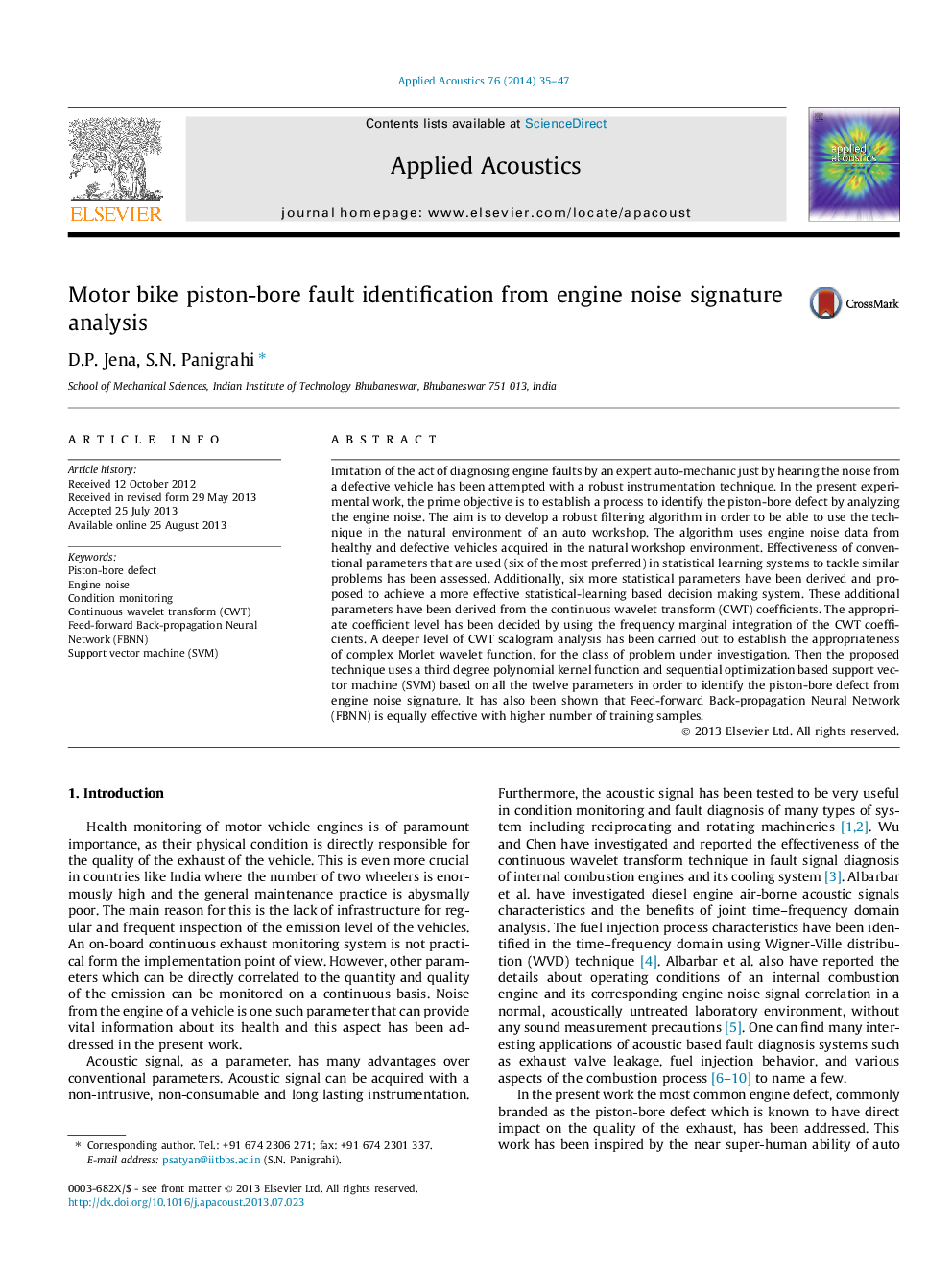| Article ID | Journal | Published Year | Pages | File Type |
|---|---|---|---|---|
| 7152918 | Applied Acoustics | 2014 | 13 Pages |
Abstract
Imitation of the act of diagnosing engine faults by an expert auto-mechanic just by hearing the noise from a defective vehicle has been attempted with a robust instrumentation technique. In the present experimental work, the prime objective is to establish a process to identify the piston-bore defect by analyzing the engine noise. The aim is to develop a robust filtering algorithm in order to be able to use the technique in the natural environment of an auto workshop. The algorithm uses engine noise data from healthy and defective vehicles acquired in the natural workshop environment. Effectiveness of conventional parameters that are used (six of the most preferred) in statistical learning systems to tackle similar problems has been assessed. Additionally, six more statistical parameters have been derived and proposed to achieve a more effective statistical-learning based decision making system. These additional parameters have been derived from the continuous wavelet transform (CWT) coefficients. The appropriate coefficient level has been decided by using the frequency marginal integration of the CWT coefficients. A deeper level of CWT scalogram analysis has been carried out to establish the appropriateness of complex Morlet wavelet function, for the class of problem under investigation. Then the proposed technique uses a third degree polynomial kernel function and sequential optimization based support vector machine (SVM) based on all the twelve parameters in order to identify the piston-bore defect from engine noise signature. It has also been shown that Feed-forward Back-propagation Neural Network (FBNN) is equally effective with higher number of training samples.
Keywords
Related Topics
Physical Sciences and Engineering
Engineering
Mechanical Engineering
Authors
D.P. Jena, S.N. Panigrahi,
